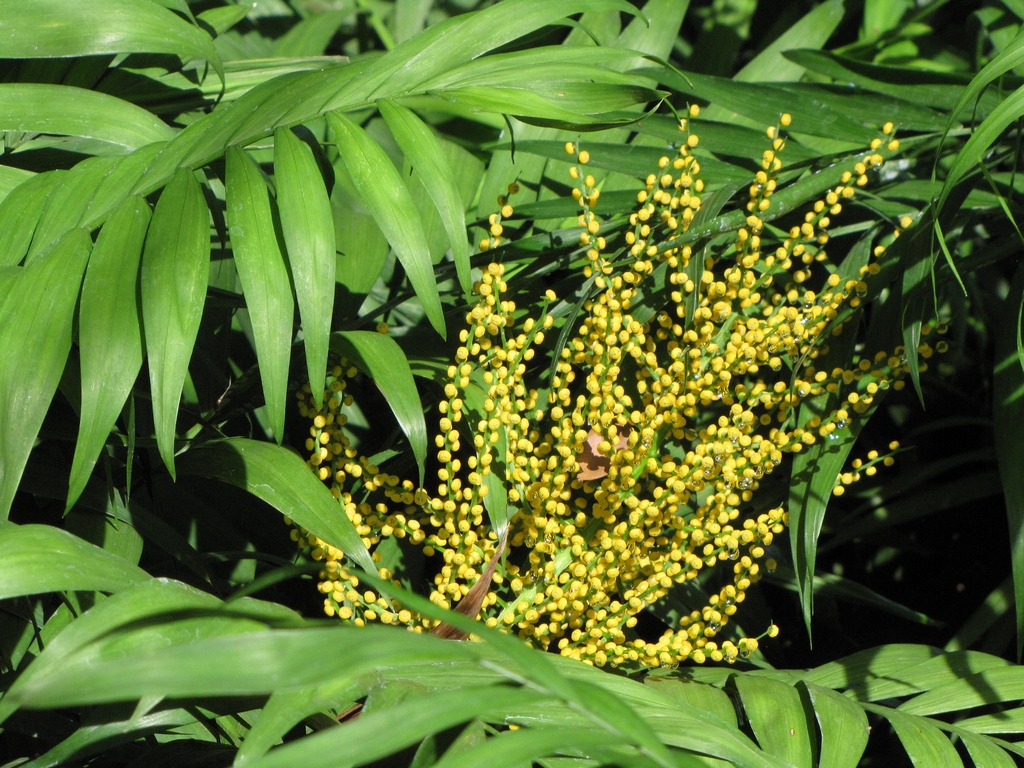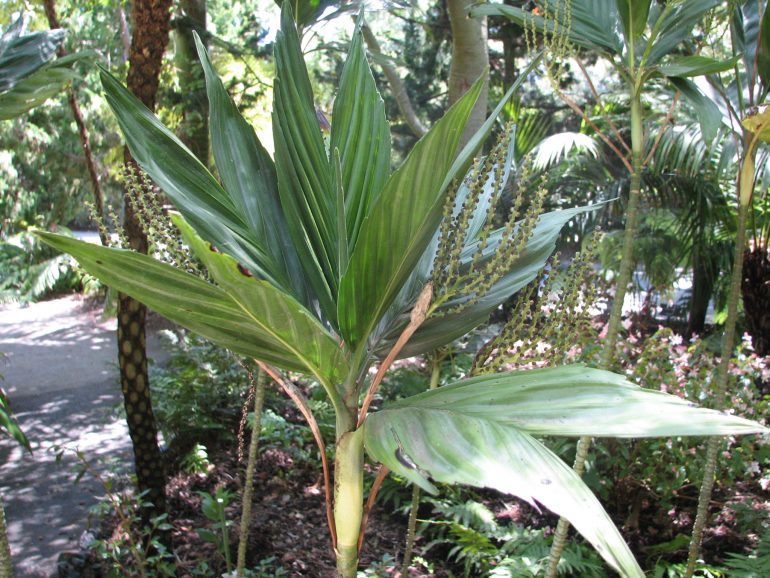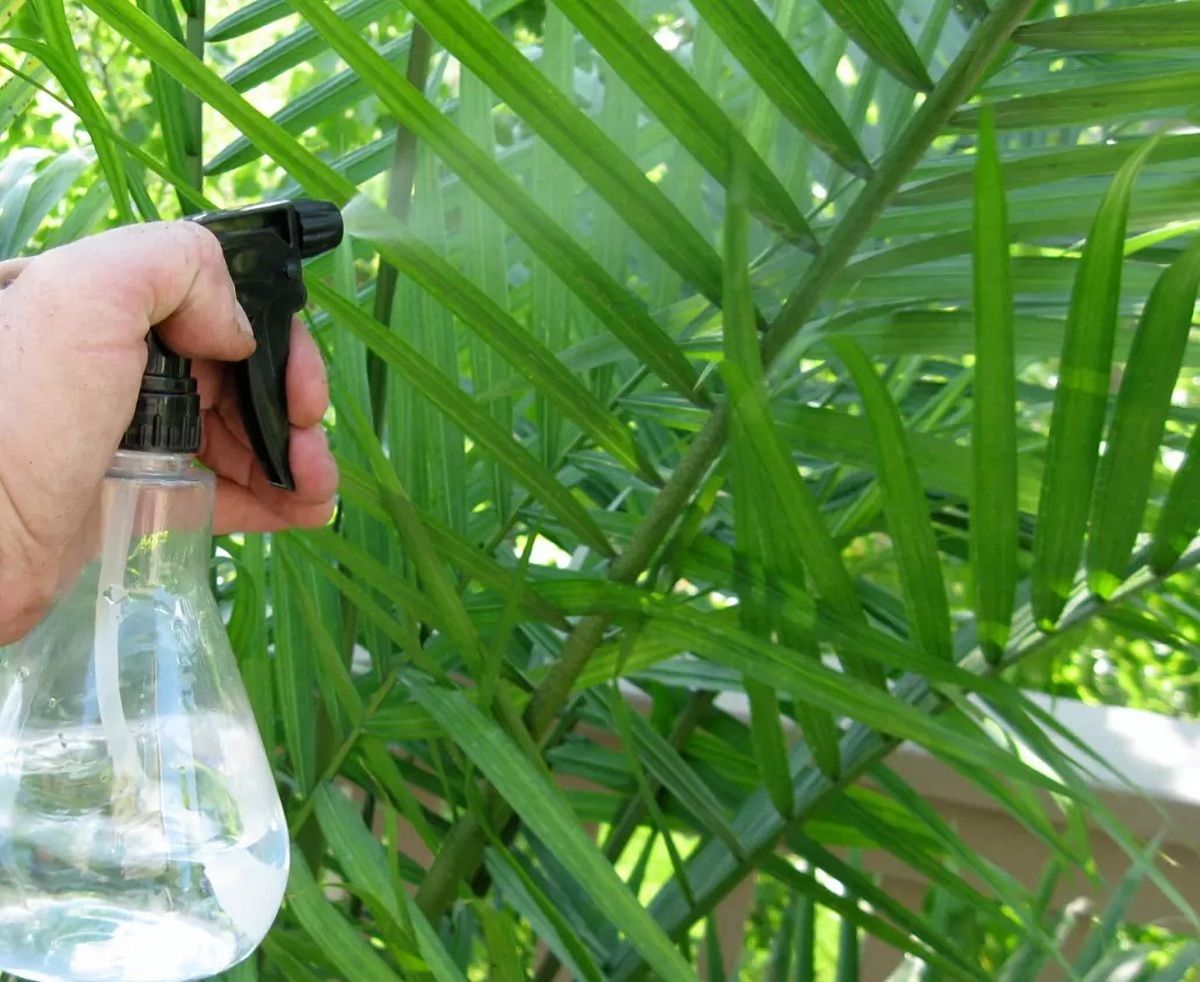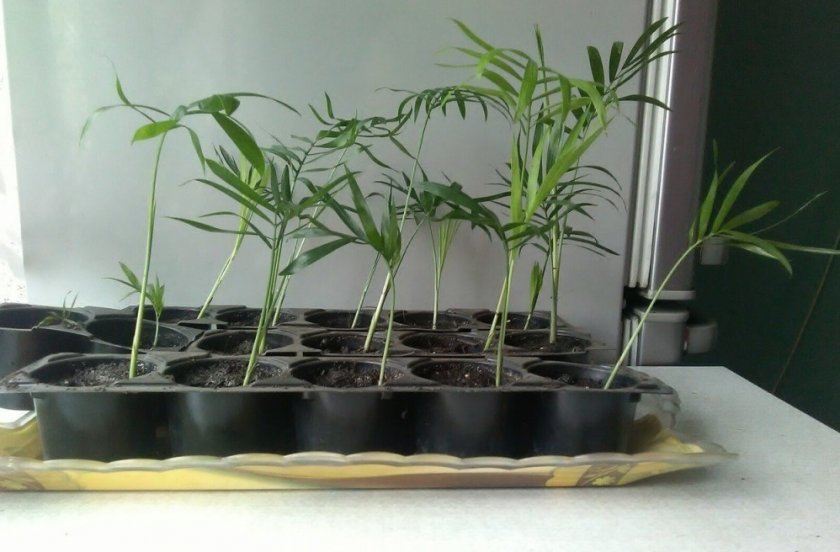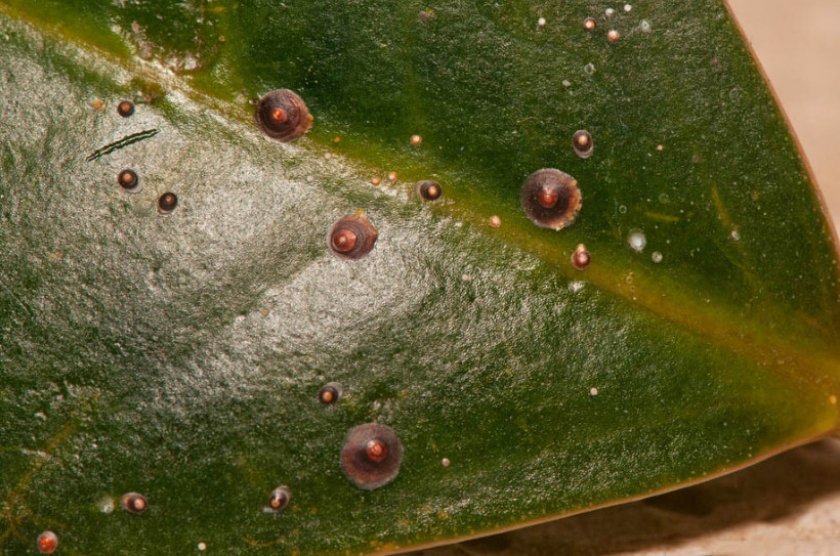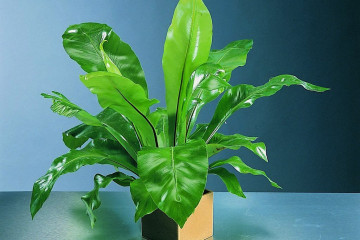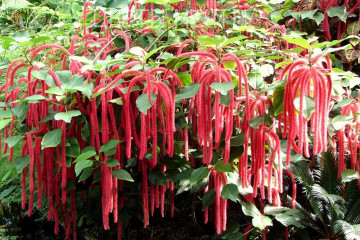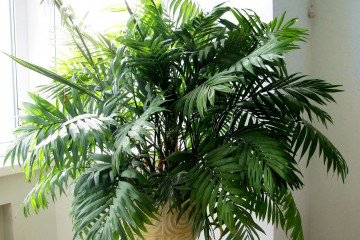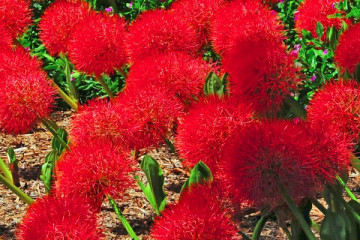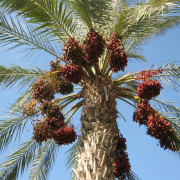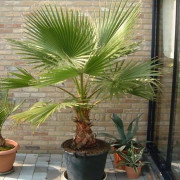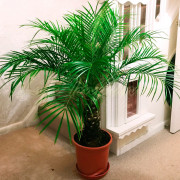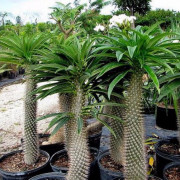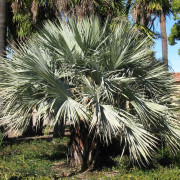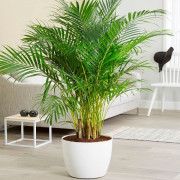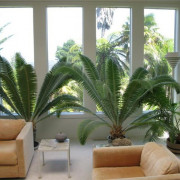Chamedorea flower - home care
Content:
The tropical chamedorea palm tree is rather short in comparison with other species, which makes it a good purchase for decorating office and home interiors. Caring for the plant is not difficult, it can be recommended for beginners in indoor floriculture.
What does hamedorea look like, which family it belongs to
The woody dioecious rhizome plant belongs to the Palm family (Latin Arecaceae).
Large feathery green leaves resemble date palm veelas, but it is impossible to confuse the two plants - the date is larger and its leaves are tougher, while the hamedorea has a shrub-type crown (made of several stems).
The homeland of the species is South and Central America, where representatives of hamedorea can be found almost everywhere in the tropical zone. Locals grow it like a beautiful indoor palm tree, and the inflorescences are used in cooking.
Common varieties
Several types of chamedorea and hybrids are grown in city apartments and dachas. The most popular of them are the following.
Hamedorea graceful (lat.Chamaedorea elegans)
It has only 1 trunk, about 2 m high. The crown ends with a crown of 6-7 large cirrus leaves. The leaf blade is formed from 8-15 "feathers" of a dark emerald tone.
The inflorescence is a panicle of red-orange cobs.
Hamedorea Ernest-August (lat.Chamaedorea Ernesti-Augusti)
It is characterized by its solid leaf blade, bifurcated at the end. Like the rest of the species, this variety has an extremely slow growth rate. The stem is one.
Flowers - scarlet, like balls and form large spreading inflorescences.
Hamedorea high (lat.Chamaedorea Elatior)
Very similar in appearance to bamboo with its thin, straight stems. The stem forms as the old leaves fall, leaving light ring scars. Usually the crown bears 4-6 emerald-green feathery leaves with pointed tips.
Small flowers are grouped in orange-colored panicles.
Hamedorea one-color (lat.Chamaedorea Concolor)
A very undemanding palm tree, almost 1 m high. The bush is formed from thin shoots ending in light green leaves, like other species - pinnately dissected.
Paniculate inflorescences - lemon shade.
Hamedorea metal (lat.Chamaedorea Metallica)
A shade-loving palm tree that does not grow above 2 m. The name was given to it by the color of the foliage, reminiscent of a metallic tide.
The leaf is wide, solid, bifurcating at the end. In old plants, the trunk becomes woody.
Hamedorea Bridble (lat.Chamaedorea Breedbladig)
A hybrid variety derived from a graceful one. For hamedorea Bridble, home care does not have any fundamental differences from other varieties.
The highlight of the hybrid is in a lush, beautiful bloom, a pleasant smell of flowers, as well as in a modest size - usually the height reaches only 1.5 m.
Healing properties
Nothing is known about the medicinal properties, but the chamedorea flower has a valuable property to clean the air in the room from fumes that are harmful to health: formaldehyde, ammonia, benzene. The foliage evaporates medicinal phytoncides.
Hamedorea - home care
Keeping this palm tree at home is not difficult. Very slow annual growth (maximum 2 leaves per year) makes it an ideal purchase for those who prefer to spend a minimum of time caring for indoor plants.
Temperature
From April to September, the optimum temperature of the content is in the range of +20 .. + 26 ° С.
In winter and autumn, the air temperature should be lowered to +16 .. + 18 ° С. Maximum permissible minimum temperature: +12 ° С.
Lighting
There is no demand for light, the chamedorea plant feels great even in a room with northern windows.
It is best to place the tub next to east or west facing windows. It is impossible to leave a palm tree under the scorching sun in summer, as this will cause yellowing and fall of the foliage.
Watering
In spring and summer, watering is carried out as often as required, focusing on the rate of drying of the topsoil in the tub. The plant does not tolerate overdrying of roots.
In winter, water is less often, but only with warm water heated to +30 ° C.
Spraying
Every day during the summer months, the leaves must be sprayed with warm water from a spray bottle. Twice a month, foliage is bathed under the shower or wiped with a damp sponge. Spraying is not required in winter, but foliage dust must also be wiped off.
Humidity
The palm tree grows well with air humidity above 50%.
In indoor conditions, this is especially important in winter during the heating season. At this time, it is advisable to put an open container with clean water next to the tub.
Priming
The substrate for planting is prepared from turf soil (3/4), and another quarter of the volume is filled with sand and peat. The result should be a loose fertile soil with an acidity of pH = 5-6.5.
Top dressing
Fertilizers are applied only in summer. Enough 1-2 dressings per month. Specialized complex fertilizers for palms are suitable, for example, Agricola.
Features of care in winter, dormant period of hamedorea
In the winter months, watering should be significantly reduced, since due to the reduction in daylight hours, metabolic processes in the palm tree slow down, and the need for water decreases.
Also, no additional dressing is done in winter.
When and how it blooms
In the wild, chamedorea blooms in the 3rd year of life in the warm season. In indoor conditions, flowering may occur later or not at all due to lack of lighting.
Types of flowers
Flowers are formed by male and female. Because of this, the owners of a single plant will not be able to obtain seeds at home.
Flower shapes
Multiple red, yellow, or orange male flowers are usually clustered in paniculate or spike-like (ear-like) inflorescences. Female flowers are single, bloom on a peduncle, have a color similar to male ones, and it is they who have a bright aroma.
Flowering period
Flowering times can vary greatly depending on the variety and age of the plant. Buds should be expected from the second half of spring to September.
Changes in care during flowering
In a plant in its third year of life, the buds should be removed to allow it to grow strong roots and foliage. In subsequent years, before and after flowering, fertilizers are applied and the soil is kept slightly moist all the time.
Pruning
The formation of the crown of the house palm hamedorea is not required. As the old leaves wilt (life span every 2 years or more), they are carefully removed to maintain the attractive appearance of the plant.
How hamedorea reproduces
There are several options for propagating this palm tree. By itself, this fact indicates a high probability of success in each case.
Germinating seeds
Reproduction of chamedorea by seeds is usually carried out when there is an adult fruit-bearing tree freely available (more precisely, several trees, since the species is dioecious). Seeds lose their germination very quickly, literally every month (the maximum shelf life is 10 months), so they are sown immediately after collection.
Before sowing, the seeds are soaked in water for 5-6 days, after scarification (each seed is slightly filed with a grindstone). You need to plant in cups with a capacity of 100 g, filled with a mixture of peat and sand. It is not necessary to bury the seed, but it should be watered and covered with a cap on top to create a greenhouse effect.
Optimum temperature for germination: +22 .. + 25 ° С. The freshest seeds will sprout in 2 months, and those that are on the verge of the expiration date will sprout only after 6-8 months. The sprout should be transplanted into a new container when its leaf grows to a length of 4 cm.
Rooting cuttings
This technique is suitable only for those types of chamedorea, in which the crown is formed in the form of a bush from several trunks. Any of the root suckers in an adult (over 3 years old) palm can be carefully separated and immediately planted in a mixture of peat and sand.
Air layering
At a bush of several trunks, one of the shoots is bent down to a pot with soil standing next to it. A small notch is made on the underside and smeared with Kornevin or cytokine paste. The place of the notch is immersed in the soil and secured with a hairpin.
If everything goes well, the roots on the shoot will appear within 2-3 months, after which the shoot can be cut off from the mother plant.
Other options
Usually chamedorea is divided at the time of transplant. The roots are washed from the soil under running water and carefully divided into parts. Then each part should be transplanted into a pot filled with fresh soil.
Transfer
Young palms are replanted annually in June. From the 5th year, this procedure is done less often - every 3 years, gradually gradually increasing the capacity of the pots. As soon as they begin to be kept in tubs with a volume of 10 liters or more, transplants are carried out much less frequently: every 5 years.
Possible growing problems and diseases
Not often, but it happens that the appearance of a plant signals the appearance of a disease or an attack by pests. Measures should be taken immediately.
Drops buds and foliage
Typical symptom of hypothermia, root clogging or lack of nutrients.
It is necessary to adjust the temperature of the content, as well as the irrigation regime - only after the top layer of the earth has dried. You need to fertilize the palm from May to September twice a month.
Leaves turn pale
This sign suggests that the plant has received a sunburn or is being watered with too hard water. It is necessary to rearrange the tub away from the window, and water only with boiled water.
The tips of the leaves dry up
This happens when the air in the room is too dry. It is necessary to spray the plant every day.
The lower leaves fall
This is a natural process. You should only worry when several leaves fall at once. This is a sign of root decay.You should remove the palm tree from the pot, rinse the roots, completely change the soil. Then pour over the fungicide solution.
Pests
A whitish loose bloom on foliage often indicates that a pest has appeared - a mealybug. Redhead spots and spots are a symptom of spider mite infestation. On the reverse side of the leaf, you can see green or red tubercles - scale insects. Against these pests, indoor plants are treated with Fitoverm or Aktara.
Other problems
A stunted appearance and sluggish foliage are common in palms that lack light. Although chamedorea is one of the shade-tolerant, it is still impossible to keep it in the dark. The first thing to do when the foliage turgor worsens is to move the tub closer to the light.
Signs and superstitions
Popular rumor claims that hamedorea improves the indoor climate and creates a favorable atmosphere for work or rest.
Knowing how to care for chamedorea, it is difficult to deny yourself the pleasure of settling this beautiful plant in your own home or office. Regular watering, very rare transplants and occasional top dressing are all she needs to feel good.





